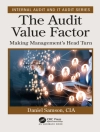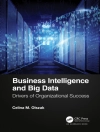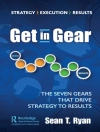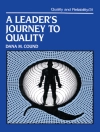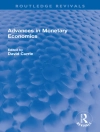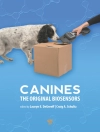The Tourism Area Life Cycle (TALC) model is one of the most cited articles in the tourism literature, and since its publication has continued to be frequently quoted and utilised by academics and those in the tourism industry. Over the past 40 years it has been subject to widespread application and discussion, as well as elaboration, modification and criticism. This book provides a final overview of the use and contribution of the model, its strengths and weaknesses, and particularly its relevance in the 21st century in the context of problems such as overtourism and disasters, including the Covid-19 pandemic. The authors represent a mixture of senior academics, all of whom have used the TALC in their research, and younger scholars who have also used and modified the model. The final section considers revisions and concludes with a new version of the model.
Mục lục
Figures and Tables
Contributors
Acknowledgements
Chapter 1. Richard Butler: Introduction and Context
Part 1: Review
Chapter 2. Richard Butler: Revisiting the TALC Model
Chapter 3. Surabhi Gore, Nilesh Borde and Purva Hegde Desai: Mapping Tourism Area Life Cycle Research: A Bibliometric Analysis
Chapter 4. Rachel Dodds: An Evaluation of the Tourism Resort Life Cycle and the Need for Sustainability Planning
Chapter 5. David Weaver and Laura Lawton: When Iconic Theory Meets Existential Threat: How the TALC Model Informed Engagement with COVID-19
Chapter 6. Ngoc Trang Vu: A Qualitative and Quantitative Application of the TALC Model to Vietnam Before the COVID-19 Pandemic
Chapter 7. Júlio Coelho: The TALC Model as a Strategic Model
Chapter 8. K. Michael Haywood: Opinions on the Reformation of TALC Studies
Chapter 9. Richard Butler: Summary: Revisiting the Model – Present Viewpoints
Part 2: Relevance
Chapter 10. C. Peter Keller: Instability and Shifting Control During Stages in Destination Development Revisited
Chapter 11. Tim Gale: Revisiting Rhyl and the TALC: A Study of Land Use, Value and Cover, and Tourism Policy in a Traditional Seaside Resort, 1990-2023
Chapter 12. David Jarratt: The Role of Place Image in the Decline and Rejuvenation of Traditional English Seaside Resorts
Chapter 13. João Romão: Smart Specialisation and the Life Cycle of Destinations: An Evolutionary Approach
Chapter 14. Beatriz Adriana López Chávez and César Maldonado Alcudia: From Start-Up to Maturity: Integrating the TALC Model with the Tourism Family Business Life Cycle in a Coastal Destination
Chapter 15. Peter Bolan and Stephen Boyd: Applying Golf Tourism to the TALC Model and as a Catalyst for Coastal Rejuvenation: The Case of The Open, at Royal Portrush, Northern Ireland
Chapter 16. Wantanee Suntikul: National and International Political Influences on the TALC
Chapter 17. Richard Butler: The TALC: Relevance 40 Years On
Part 3: Revision
Chapter 18. Florian Eggli: The Need to Revise the Conceptual Approach of the TALC Model
Chapter 19. Hughes Séraphin, Maximiliano Korstanje and Shem Wambugu Maingi: Spare the Child, Spoil the Long-Term Sustainability of the Tourism Industry: What Does That Mean for the TALC?
Chapter 20. Mike Peters and Sarah Schönherr: The Role of Entrepreneurship in Tourism Destinations: Implications for TALC
Chapter 21. Stephen Boyd and Peter Bolan: Applying TALC Model to Northern Ireland: A Destination Facing Recovery from Multiple Crises
Chapter 22. Bob Mc Kercher and Ip Kin Anthony Wong: Can Destinations Have Multiple Life Cycles?
Chapter 23. Richard Butler: Final Thoughts: Revisions and Modifications to the TALC Model
Index
Giới thiệu về tác giả
Richard Butler is Emeritus Professor at the University of Strathclyde, UK and the University of Western Ontario, Canada. His research focuses on destination development, remote and insular areas, impacts of tourism, sustainability and overtourism.


